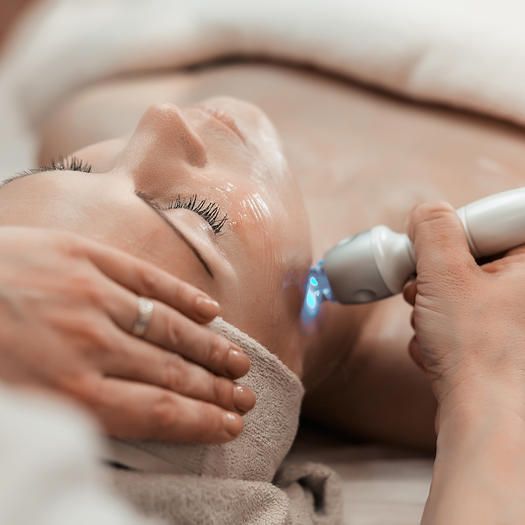Undergoing a professional skin treatment is a significant step towards achieving your skincare goals, whether it’s addressing acne, pigmentation, or signs of aging. However, the success of any in-clinic procedure doesn’t end when you leave the clinic; it heavily relies on diligent and appropriate aftercare. Proper post-treatment care is crucial for optimizing results, minimizing side effects, and ensuring a smooth healing process. Neglecting aftercare can lead to complications, prolonged recovery, and even compromise the effectiveness of the treatment.
The Importance of Aftercare: Why It Matters
Professional skin treatment, especially those that involve exfoliation or controlled injury to the skin (like chemical peels, microneedling, or lasers), create a temporary vulnerability. The skin’s natural barrier may be compromised, making it more susceptible to irritation, infection, and environmental damage. Effective aftercare aims to:
- Promote Healing: Support the skin’s natural repair mechanisms.
- Reduce Side Effects: Minimize redness, swelling, discomfort, and peeling.
- Prevent Complications: Guard against infection, hyperpigmentation (dark spots), or scarring.
- Optimize Results: Ensure the skin heals optimally to reveal the desired improvements.
- Maintain Integrity: Rebuild and strengthen the skin’s protective barrier.
Universal Aftercare Principles for All Treatments
While specific instructions will vary based on the treatment you receive, some core aftercare principles apply almost universally:
1. Strict Sun Protection
- Why it’s crucial: Treated skin is highly sensitive to UV radiation. Sun exposure can lead to severe hyperpigmentation, burns, and undo the benefits of the treatment.
- Action: Apply a broad-spectrum sunscreen with SPF 30+ or higher daily, even indoors or on cloudy days. Reapply every 2-3 hours if outdoors. Wear wide-brimmed hats and seek shade. This is non-negotiable.
2. Gentle Cleansing
- Why it’s crucial: Harsh cleansers can strip the skin and cause irritation.
- Action: Use a mild, gentle, non-foaming cleanser recommended by your practitioner. Use lukewarm water and pat your skin dry with a soft, clean towel. Avoid scrubbing or rubbing.
3. Consistent Hydration and Moisturization
- Why it’s crucial: Treated skin often experiences dryness and dehydration as it heals. Proper moisturization supports the barrier and aids healing.
- Action: Apply a rich, soothing, non-comedogenic moisturizer frequently throughout the day, as advised by your practitioner. Look for ingredients like ceramides, hyaluronic acid, and squalane.
4. Avoid Active Ingredients and Exfoliants
- Why it’s crucial: Using strong active ingredients too soon can cause severe irritation, inflammation, and damage to healing skin.
- Action: Steer clear of retinoids (retinol, tretinoin), AHAs, BHAs, Vitamin C, and other exfoliating or highly active ingredients for the period recommended by your practitioner (usually 5-14 days or longer).
5. Hands Off!
- Why it’s crucial: Picking, scratching, or peeling flaking skin can lead to infection, scarring, and hyperpigmentation.
- Action: Resist the urge to touch your face unnecessarily. Let any peeling or crusting resolve naturally.
Specific Aftercare Considerations by Treatment Type
For Chemical Peels:
- Expect redness, tightness, and peeling for several days to a week or more, depending on the peel’s depth.
- Keep skin hydrated and protected. Avoid direct sun exposure rigorously.
For Microneedling:
- Expect redness and mild swelling for 1-3 days, similar to a sunburn.
- Avoid makeup for 24 hours. Use only gentle, hydrating products.
- Avoid strenuous exercise, hot showers, and saunas for 24-48 hours.
For Laser and Light Therapies (IPL, Fractional Lasers):
- Redness, swelling, and a sensation of warmth are common. Pigmented spots may darken before flaking off.
- Follow specific instructions for cooling, soothing balms, and avoiding heat exposure.
- Strict sun avoidance is paramount to prevent post-inflammatory hyperpigmentation.
For Injectables (Botox, Fillers):
- Mild swelling, bruising, or redness at injection sites are common.
- Avoid touching or massaging the treated area for a few hours.
- Avoid strenuous exercise, alcohol, and blood-thinning medications for 24 hours to minimize bruising.
Conclusion
The success of any professional skin treatment is a partnership between you and your practitioner. While the in-clinic procedure lays the groundwork, meticulous aftercare is the bridge to achieving optimal, lasting results. By diligently following your practitioner’s instructions, prioritizing sun protection, and nurturing your skin through its healing phase, you can maximize the benefits of your treatment and unveil the healthy, radiant complexion you desire.

